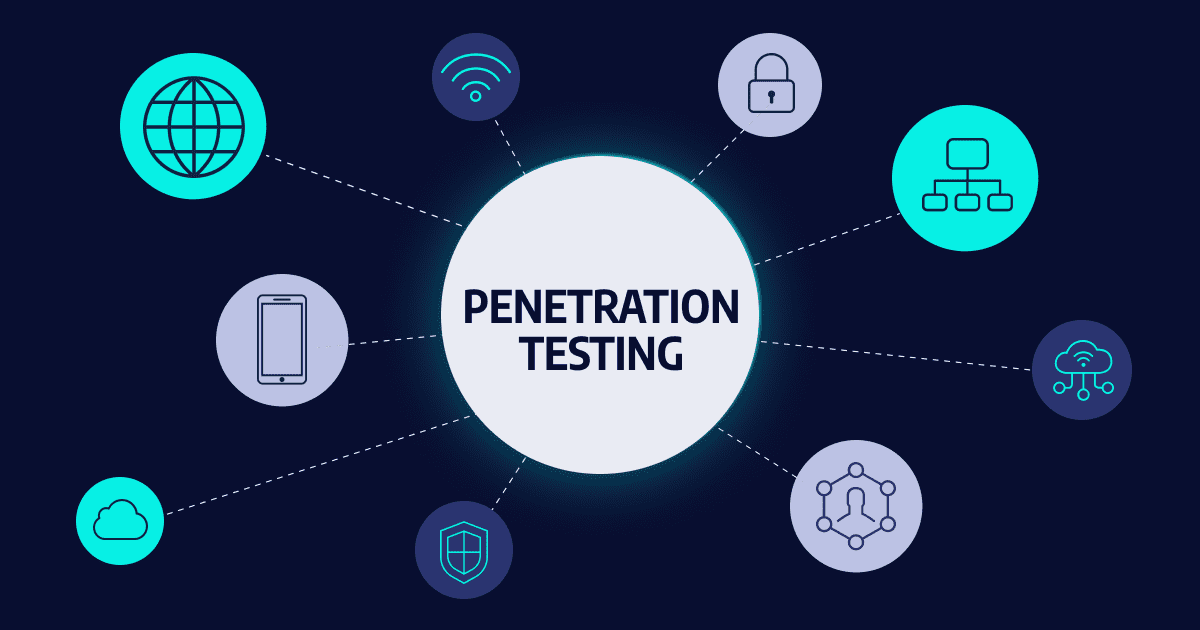Improvements in attack methods on information systems have led to an increase in the number of cyber attacks. To protect data, various methods of vulnerability testing have been introduced, which are necessary to ensure network security, one of which is a pentest. Today, businesses can conduct software, application, and web application penetration testing. You will learn about the benefits of this testing in this article.
What Are Pentests For?
Unauthorized access to data or disruption of the organization’s system by intruders is carried out if there are vulnerabilities in it. It is possible to prevent hacking through research that identifies software flaws that can cause a problem.
In the process of penetration testing, specialists use techniques used by hackers, which allows them to identify weaknesses in the application. As a result of emulating the actions of potential intruders, the effectiveness of protective measures is assessed. This allows you to identify vulnerabilities before real attacks and take measures to eliminate the identified problems.
Who Is a Pentester?
A pentester checks the level of security of a company’s information system from the perspective of a potential intruder. With the permission of the system owners, the specialist emulates attacks and applies methods that are used for unauthorized access or compromise. The operation allows you to identify open ports, vulnerable points, and weaknesses in the system.
The specialist’s responsibilities include:
- selecting areas for testing and developing a testing plan;
- scanning, identifying vulnerabilities, and attempting a real attack to check how effective the protection methods are;
- analysis of results with determination of the level of risks and ways to eliminate them;
- preparation of detailed reports on the work performed, which display the results and recommendations.
Pentesters have a wide range of knowledge in the field of information security. They know everything about various types of attacks, network protocols, and vulnerabilities, including operational and cryptographic methods. Specialists must be aware of the latest trends and methods used by attackers, which will improve the results of their work.
Penetration Testing Methodologies
Penetration testing is performed using different types of methods that determine approaches to implementing the penetration testing procedure. In the field of information technology, the following methods for identifying vulnerabilities are recognized:
- Black box. Pentesters work without knowledge of the specifics of the structure and internal architecture of the infrastructure, which allows emulating the actions of an external attacker without having privileged access;
- White box. A specialist is given full access to the source code of applications, documentation, and detailed information about the network infrastructure, which is necessary for the accurate identification of problem areas and detection of vulnerabilities at a deep level;
- Gray box, combining the principles of black and white box technology. A specialist is not given all the information about the system, for example, he may have limited access to the source code or to the basic structure;
- Internal test. It focuses on checking the security of systems and networks within the organization, which allows detection of vulnerabilities associated with insufficient network segregation, problems with access rights, and other internal aspects;
- External test. It allows you to analyze public entry points into the system that can potentially be used to compromise the system;
- Focused test. It allows pen testers to check new functions and applications that are at risk, or assess the impact of a certain type of attack on the system;
- Combined test, combining several testing methods to get a more complete overview of the system’s security.
How Is a Pentest Performed?
Penetration testers use international methods that are recognized in the field of information security. They are used in various scenarios, and their choice is determined by the goals of penetration testing.
- In the open methodological standard OSSTMM, testing is carried out by areas (environment, tasks, vulnerabilities, and impact). At the same time, attention is focused on monitoring and analyzing the response of the infrastructure.
- The integrated ISSAF approach involves working in several stages (information collection, scanning, access analysis, exploitation, and testing of attack scenarios). The technology provides recommendations for risk management and vulnerability impact assessment.
- The PTES methodological principles define the stages of penetration testing, starting with planning and information collection, and ending with documenting the results and recommendations for troubleshooting.
- The NIST technical guide regulates the principles of work and documentation, as well as the choice of tools and technologies.
- OWASP covers various aspects, such as authentication, input validation, and session management, which allows you to protect web applications from attacks.
- The PCI DSS security standard is designed for organizations that process credit cards. It ensures the secure handling of cardholder data, including network security, access control, and vulnerability management to protect against data leaks.
How to Evaluate The Results of a Pentest?
The effectiveness of a pentest can and should be evaluated. And much more thoroughly than any other process, because any shortcomings here negatively affect security.
The requirements for the document are different, depending on who it is supposed to be presented to and how to use it. But the pentest itself has quite measurable quality indicators. The first and main one is completeness.
All hosts in the testing area must be checked for vulnerabilities. Depending on the terms of the contract and the methods used both instrumental and manual checking can be performed. But all resources must be analyzed. The same applies to web applications – all pages, links, directories, and settings must be checked.
Next, we will list indirect indicators of pentest quality:
- updated licensed tools (although it is possible without them);
- a detailed report with clear recommendations and a description of attack vectors;
- the occurrence (or, on the contrary, prevention) of denial of service;
- breach of confidentiality of information.
Wrapping It Up
Conducting penetration testing is a complex, multi-stage process carried out by information security professionals. It includes information gathering, weakness analysis, attack modeling, exploitation of vulnerabilities, and reporting on the results of the test. If you are interested in conducting application security penetration testing, we recommend paying attention to the ImmuniWeb AI platform.




